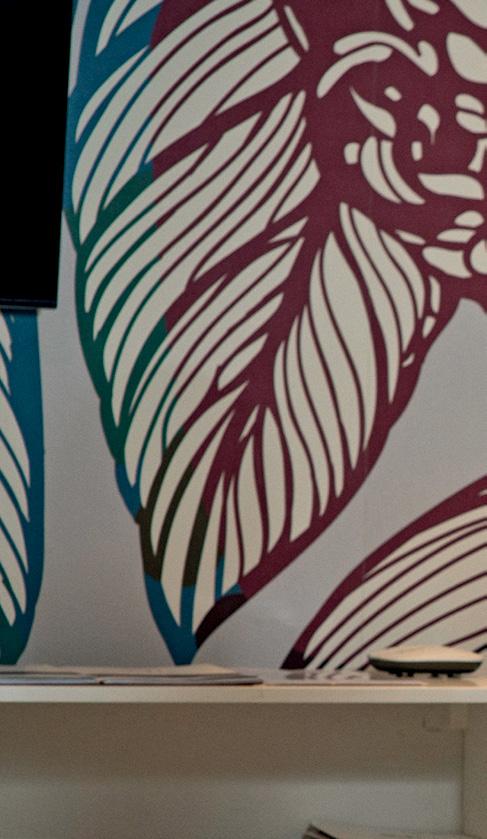
10 minute read
REAL ESTATE TRENDS
ISSUE TOPIC
WHERE IS THE REAL ESTATE MARKET GOING?
Advertisement
Despite a brief standstill at the start of the pandemic, the domestic real estate market not only quickly recovered, but has been expanding for the past year and a half. What has changed in the meantime, what trends we can expect in the coming year, and whether Serbia will continue to be Europe’s Hot Spot, we asked the West Properties leadership team
Text by: JOVANA NIKOLIĆ Photo: MILOŠ LUŽANIN
L
ast year was at least challenging for the real estate sector, although there will be no shortage of uncertainty and excitement in 2022. Record growth in real estate prices in cities across Serbia, particularly in Belgrade, where the average price per square meter surpassed 2,000 euros, as well as record real estate turnover and even a record number of issued building permits, indicate that this expansion will continue next year. Even though some expect that such a market will collapse, the leaders of West Properties believe that such a prediction is far from realistic. Many local and global factors influence the market, which West Properties has continuously observed and researched for the past 20 years, allowing them to raise the level of service in the real estate industry to the highest professional level and gain the trust of many domestic and foreign clients.
“The market will certainly slow down at some point, as continuous expansion is neither natural nor normal. Stagnation will occur, but no one can tell when it will happen, just as no one could have foreseen such a rapid expansion. The market was dormant for a while after the previous financial crisis in 2009, but it began to wake up in 2011 and 2012, and the process is still ongoing. During the pandemic, this process simply accelerated in comparison to the natural flow that existed before, primarily because people invested in real estate as the safest form of savings out of fear for the acquired capital”, explains Vladimir Vukićević, CEO.
The dread of inflation, which was projected as a result of governmental aid to the economy, which was the practice in most countries, and the printing of money, triggered this psy-
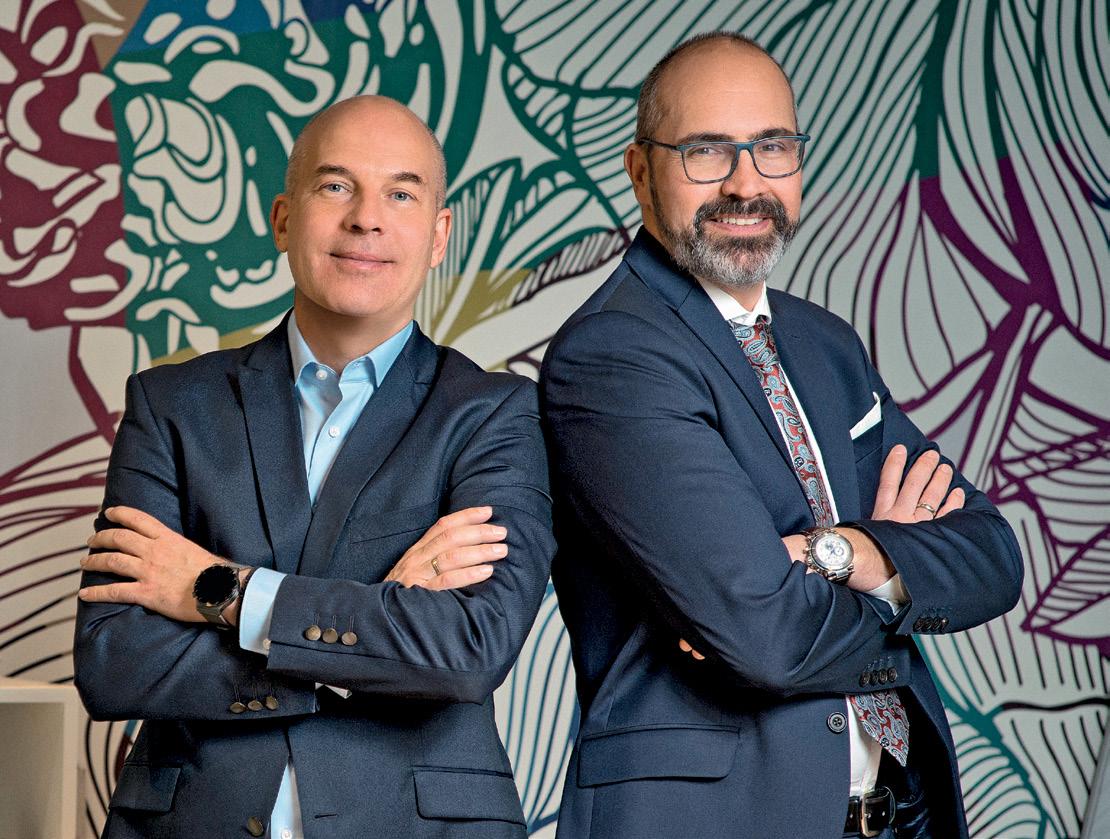
chological moment, according to Managing Director Vladimir Popović. “People who had money sought to safeguard it as soon as possible, fearing inflation, so they bought real estate, which ultimately led to greater demand, which in turn raised real estate prices. Meanwhile, raw material prices for real estate construction have risen due to issues in logistics and supply chains, affecting the price per square meter as well,” Popović adds.
When asked how much the prices per square meter will grow, Vladimir Popović believes that the answer is simple: as long as demand exceeds supply. “Many factors influence the price per square meter, including the cost of the land, the cost of contributions, the cost of primary and secondary infrastructure, and, most importantly, the time it takes to complete the project. All of the factors that influence the price of a newly constructed apartment are eventually passed on to the customer. And it will remain that way until supply and demand are balanced, which, in my opinion, will not happen anytime soon”, says Popović.
According to Vladimir Vukićević, the supply-demand imbalance is most obvious in Belgrade, where nearly every unit in a new building can be sold instantly, provided it satisfies quality criteria. “Although we see a lot of cranes in Belgrade, we’re talking about hundreds of
Vladimir Vukićević, CEO, and Vladimir Popović, Managing Director
thousands, if not millions, of square meters, but when we turn it into housing units, which amounts to about three to five thousand new housing units per year in Belgrade, it is insufficient for a city of two million people”, Vukićević says. He goes on to say that the increased migration from the interior to the capital, as well as our diaspora, which has aspirations to return to Serbia at the conclusion of their working lives, should be factored in. When all of the requirements are considered, it is apparent that Belgrade still lacks a significant amount of living space, and that high demand will continue to be a trend.
All of this creates opportunities for new real estate investments, which Vladimir Popović believes are more than desirable. “In terms of several factors, such as infrastructure, transportation, and even urban population, Belgrade is still a poorly developed city. There are streets two or three kilometers from the center that are densely packed with small, dilapidated dwellings and so do not meet the micro-location. All of these are prospective areas for new building, and I feel that we cannot talk about achieving the peak in city construction as long as such locations exist and are not urbanized,” Popović says.
According to West Properties, while apartments of 50 to 80 square meters are still the most sold, there is an increasing demand for luxury apartments of up to 150 square meters, from which customers expect maximum comfort – from the building’s garage, representative entrance, and security guard, to the gym, pool, and spa within the residential complex, which only demonstrates how much clients’ criteria have changed recently. Luxury apartments in new buildings, at premium locations, such as Senjak, Dedinje, Vracar and New Belgrade, are sold in advance at very high prices. Behind such investments, as well as behind large residential complexes of up to 200,000 square meters, are well-known investors who are trusted, Vladimir Vukićević points out.
“Until recently, they were mostly foreign investors, but in recent years, domestic investors have become increasingly relevant. There are domestic and international construction companies on the market, as well as numerous European funds that invest foreign resources in domestic projects. Foreign investments are always welcome since they add to the excitement
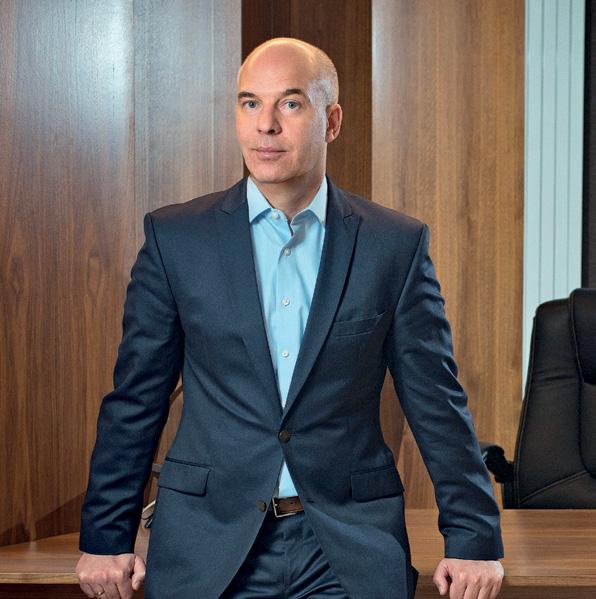
Belgrade still lacks a significant amount of living space, and high demand will continue to be a trend, says Vladimir Vukićević
COWORKING & NETWORKING
The crisis time, particularly the first year of the pandemic, was extremely difficult for all players in our real estate market, and West Porperties’ strategy was to keep operating as usual. On the one hand, they were highly effective in adjusting to new market trends, such as the need for coworking business space among clients at one point, and on the other side, they worked on their own networking. “During the previous period, we were able to make contact with potential new partners all around the world. I’m hoping that we’ve done an excellent job of networking, which will most likely lead to new business prospects. What matters most to us as a company is that we have maintained and, even during the most difficult phase, the lockdown, we have remained consistent with our business standards, which has maintained customer trust. We even stepped up our efforts, particularly in terms of hiring new and high-quality professionals, all for the benefit of our clients, who have not been shortchanged in the last year and a half,” Vladimir Popović says.
PARTICIPATION IN MIPIM IS AN HONOR AND A RESPONSIBILITY
West Properties will be the only Serbian real estate company at MIPIM, the world’s most prestigious real estate fair, which will take place in Cannes in March. Participating in such an event, which brings together the world’s largest real estate experts, is both an honor and a responsibility for the WP, for two reasons. The first reason is that they will be able to present themselves, Serbia, and the region as a whole to potential investors. The second reason is that it will allow its staff to meet some of the best real estate experts in the world, allowing them to network and strengthen the company’s business.
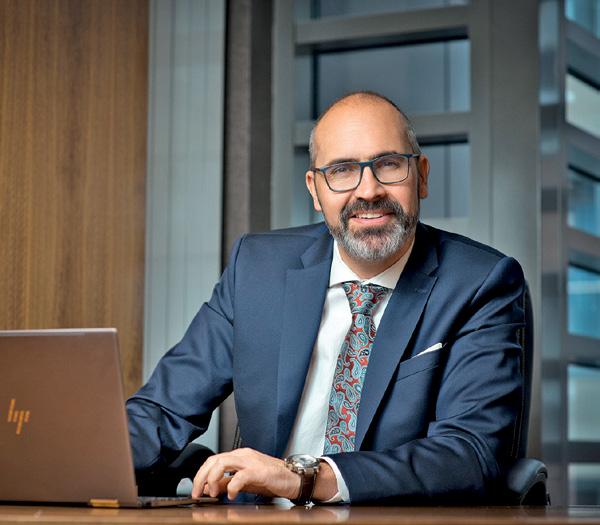
New real estate investments are more than desirable, according to Vladimir Popović of the race in our market. For a foreign investor looking to enter a new market, system security is critical, and we must keep in mind that Serbia is not yet a member of the EU, which is an aggravating factor that many investors in the surrounding countries are cautious about. For investors and buyers, the financial structure is also critical. That is why we always recommend project financing to our investors, as it provides an additional guarantee to the buyer that everything will go as planned with that facility from the start. When it comes to major investments, that flow must be as smooth as possible, with as few oscillations as feasible,” Vukićević explains.
Not only are apartments in short supply in the domestic real estate market, but so is office space, particularly in Belgrade, despite the fact that we have now exceeded the millionth square meter with the newly built 100,000 square meters. This disparity is even more striking when comparing Belgrade to Zagreb, which has half the population, while Belgrade has half the number of square meters of office space, Vladimir Popović points out. “Our clients have expressed a strong desire to relocate their businesses to the old part of the city, where we still have a chronic lack of office space, as evidenced by our exclusive representation of renting space in several office buildings in the old part of the city, including Ziegel House in Vracar, Kings Cross in Dedinje, Swiss Build in Zvezdara, and Mia Dorcol in Dorcol. New business premises projects are being implemented in New Belgrade, with others planned for other parts of the city, indicating a positive trend for the city of Belgrade as a whole. The emergence of new companies and the expansion of existing ones are positive indicators that the economy is improving,” Popovic says and adds that there is a growing expansion of logistics centers and warehouses in this area of commercial real estate, indicating that Belgrade is experiencing economic growth, which will benefit everyone.
In terms of expectations for 2022, West Properties anticipates a return to normal business practices, but given the world’s continued instability, they believe that investing in real estate will remain the only way for people to feel secure and save money. “I am certain that, in that regard, Serbia will remain Europe’s Hot Spot, due primarily to construction trends. More building licenses, in my opinion, will be issued. I expect the demand trend to continue, in part because it is unclear whether global inflation would consume people’s money in their accounts, thus it is likely that our diaspora will employ this kind of security. They’ll buy real estate here even sooner because it’s cheaper than abroad,” Popović says.
NEWS
THE NCR CAMPUS IN BELGRADE IS EUROPE’S LARGEST
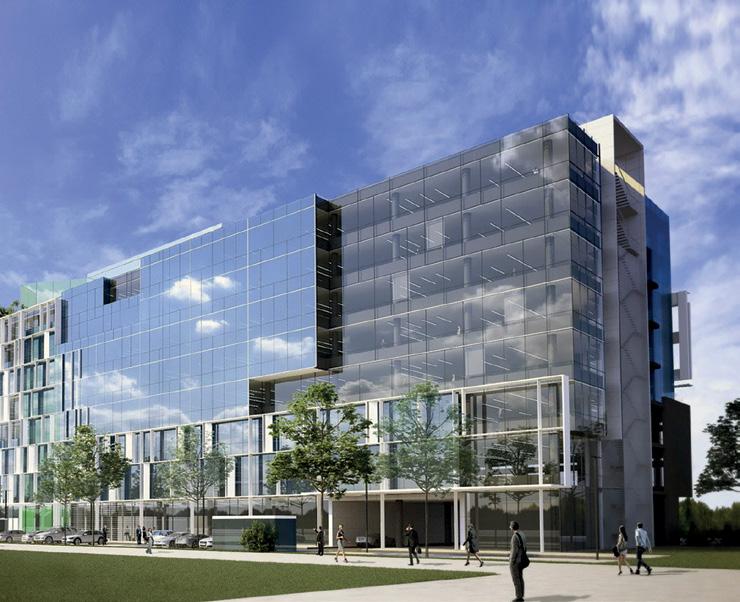
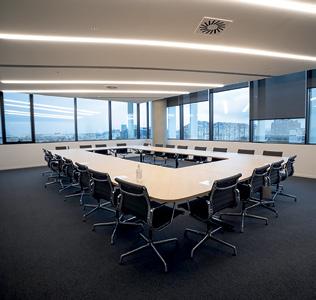
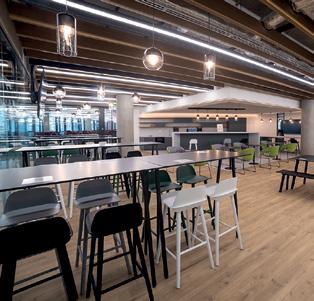
The NCR Corporation’s new, state-ofthe-art technology campus in Block 42 in New Belgrade opened in early October. This American company’s new business center was built to the greatest standards of smart construction, covering 30,000 square meters, with a total investment of more than 100 million dollars. The new building, which honors the tenth anniversary of NCR’s operations in Serbia, is Europe’s largest NCR technology campus, bringing together more than 5,000 experts from various fields such as engineers, economists, lawyers, philologists, analysts, marketing and communications experts. The campus is designed as an open space, with 21 rooms dedicated to specific purposes, such as a development software testing lab and a Customer Experience Center, as well as 185 meeting rooms. The structure has 13 elevators, two parking levels, and seven stories of office space. NCR is a global technology leader in offering high-quality, professional support to companies in various industries, enabling about 550,000,000 transactions each day through its software, hardware, and range of services. NCR is one of Serbia’s largest IT employers, and it engages in a specific program of university collaboration, with more than 80% of employees belonging to the millennial generation.

NEW RESIDENTIAL COMPLEX IN LJUBLJANA
Anew housing estate called Novo Brdo, which will house 498 families and individuals, was recently opened in Ljubljana. The estate will also host various public services, such as a library and shops, as well as an open outdoor space with plenty of green areas, children’s playgrounds and a pond. It is the largest among the projects that recently provided a total of 1,887 new housing units in Slovenia and it was made possible by a 50 million euro loan from the Council of Europe Development Bank. The Housing Fund is now working on a new cycle of ten projects totaling 906 projected housing units, for which it will request a new loan from the Council of Europe Development Bank. It is estimated that Slovenia needs about 10,000 additional housing units, and the Slovenian government plans to provide about 5,000 by 2026.











